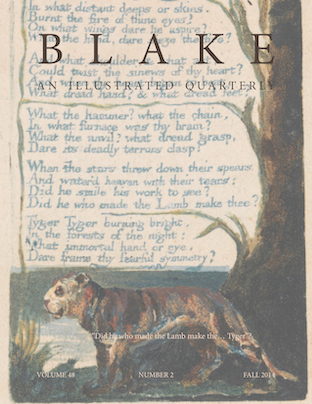Susan Matthews, Blake, Sexuality and Bourgeois Politeness
DOI:
https://doi.org/10.47761/biq.140Abstract
Matthews’s book, a must-read for anyone interested in Blake and gender, reinvestigates Blake’s attitude toward sexual freedom, especially female desire, while firmly identifying his approach to gendered sexuality as a response to the dictates of eighteenth-century bourgeois culture, politeness, and sensibility. Matthews relocates Blake by focusing on his commercial works and recontextualizes his poetic language via the public discourse on sexuality within the bourgeois world. The new Blake emerges once the works normally associated with misogynistic views are more and better contextualized within the personal and textual networks surrounding them: “Like Oothoon, [Nicholas Rowe’s Jane] Shore is opened by suffering to a consciousness of others, losing a sense of her own separate self and of the separateness of sexuality from other categories” (198). Here, the feminine self is presented as emotionally involved and engaging (sexually), which means that it inadvertently challenges its liminal position as passive other, fixed as a norm and constructed through eighteenth-century cultural discourse. Female figures who are engaged, Matthews argues, counterpoint the masculine self and Adam Smith’s model of the sympathetic spectator, which relies on the point of view of the masculine self as focalizer of emotion.




